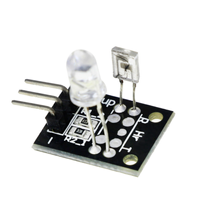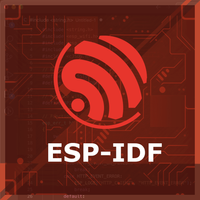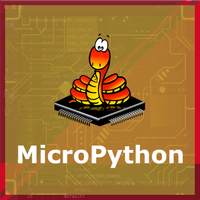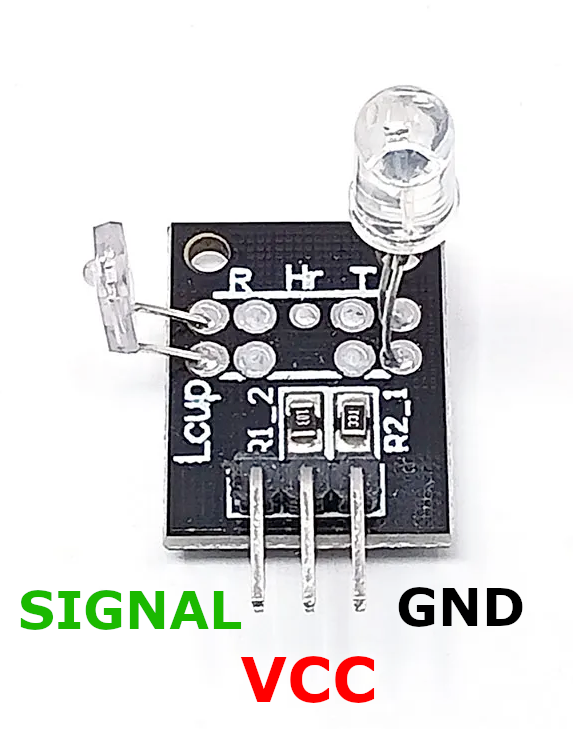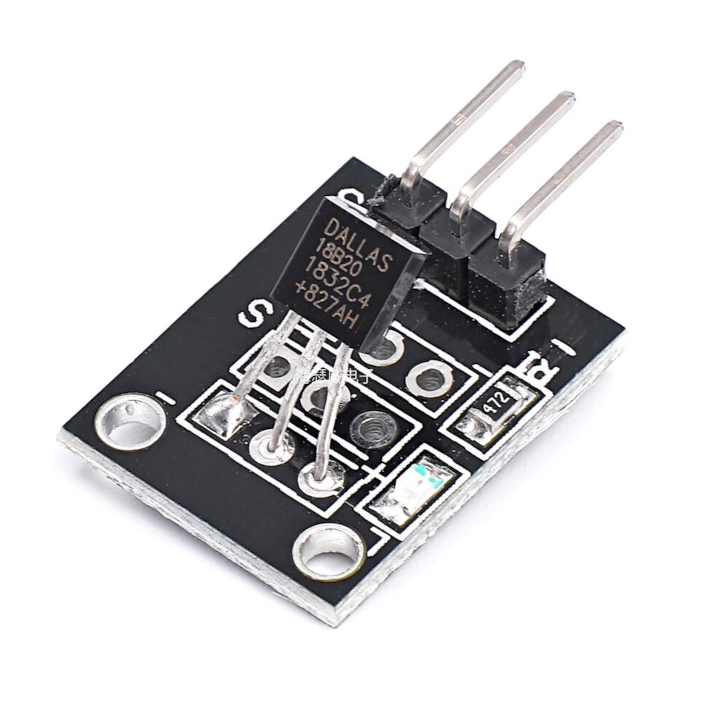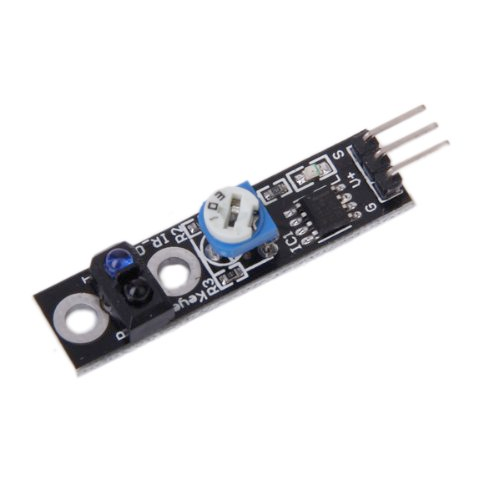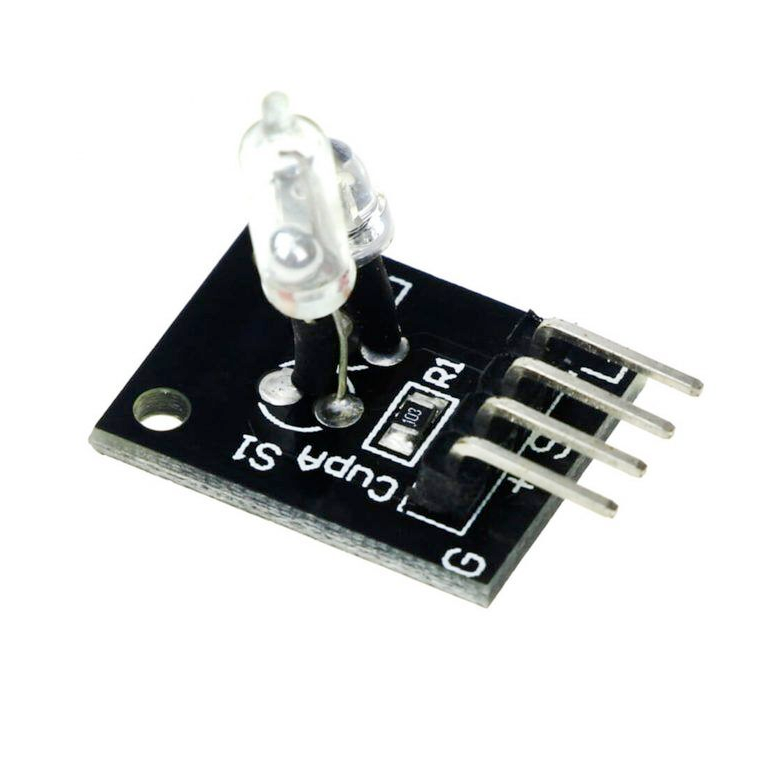ESP32 KY-039 Heartbeat Sensor Module Pinout, Wiring, ESP32 and more
Overview
The KY-039 is a heartbeat sensor module that uses an infrared LED and a phototransistor to detect pulse signals. It provides an analog output corresponding to the heartbeat, making it suitable for health monitoring and related applications.
About KY-039 Heartbeat Sensor Module
The KY-039 Heartbeat Sensor Module is designed to detect heartbeats by measuring the variations in blood flow through a finger. It utilizes an infrared (IR) LED and a phototransistor to sense these changes. When a finger is placed between the IR LED and the phototransistor, the module outputs an analog voltage corresponding to the detected heartbeat. This sensor is commonly used in health monitoring projects, fitness applications, and biofeedback systems.
Where to Buy KY-039 Heartbeat Sensor Module



Prices are subject to change. We earn from qualifying purchases as an Amazon Associate.
KY-039 Datasheet and Technical Specifications
KY-039 Pinout Diagram
The VCC pin is used to supply power to the sensor,
and it typically requires 3.3V or 5V (refer to the datasheet for specific voltage requirements).
The GND pin is the ground connection and must be
connected to the ground of your ESP32.
VCC:Connects to the power supply, typically 3.3V or 5V.GND:Connects to the ground of the circuit.S (Signal):Outputs an analog voltage corresponding to the heartbeat signal.
KY-039 Wiring with ESP32
VCC:Connect to ESP323.3V.GND:Connect to ESP32GND.S (Signal):Connect to an ESP32 ADC pin (e.g.,GPIO34).
KY-039 Troubleshooting Guide
Common Issues
❌ No Signal Detected
Issue: The sensor does not output any signal when a finger is placed between the IR LED and phototransistor.
Solutions:
- Ensure the module is properly powered with the correct voltage (3.3V or 5V).
- Verify all connections are secure and correctly wired.
- Make sure the finger is positioned correctly between the IR LED and phototransistor.
- Check for ambient light interference and consider shielding the sensor from external light sources.
⚠️ Unstable or Noisy Readings
Issue: The sensor outputs fluctuating or noisy signals.
Solutions:
- Implement signal filtering in the software to smooth out the readings.
- Ensure the environment is free from electrical noise or interference.
- Check for any loose connections or faulty components on the module.
Debugging Tips
🔍 Serial Monitor
Use the Serial Monitor to check for error messages and verify the sensor's output. Add debug prints in your code to track the sensor's state.
⚡ Voltage Checks
Use a multimeter to verify voltage levels and check for continuity in your connections. Ensure the power supply is stable and within the sensor's requirements.
Additional Resources
KY-039 Code Examples
Arduino Example
#define SENSOR_PIN A0
void setup() {
Serial.begin(9600);
pinMode(SENSOR_PIN, INPUT);
Serial.println("KY-039 Heartbeat Sensor Test");
}
void loop() {
int sensorValue = analogRead(SENSOR_PIN);
Serial.println(sensorValue);
delay(10);
}This Arduino code initializes the analog pin connected to the KY-039 sensor. It reads the analog value corresponding to the heartbeat signal and prints it to the serial monitor every 10 milliseconds. Users can observe the serial plotter to visualize the heartbeat waveform.
ESP-IDF Example
#include <stdio.h>
#include "freertos/FreeRTOS.h"
#include "freertos/task.h"
#include "driver/adc.h"
#define SENSOR_CHANNEL ADC1_CHANNEL_6 // GPIO34
void app_main(void) {
adc1_config_width(ADC_WIDTH_BIT_12);
adc1_config_channel_atten(SENSOR_CHANNEL, ADC_ATTEN_DB_11);
printf("KY-039 Heartbeat Sensor Test\n");
while (1) {
int raw = adc1_get_raw(SENSOR_CHANNEL);
float voltage = raw * (3.3 / 4095.0);
printf("Analog Voltage: %.2f V\n", voltage);
vTaskDelay(pdMS_TO_TICKS(10));
}
}This ESP-IDF code configures GPIO34 as an analog input for the KY-039 heartbeat sensor. It reads the analog voltage corresponding to the heartbeat signal and prints it to the console every 10 milliseconds, allowing for real-time monitoring of the pulse waveform.
ESPHome Example
sensor:
- platform: adc
pin: GPIO34
name: "KY-039 Heartbeat Sensor"
update_interval: 10ms
filters:
- multiply: 3.3
- lambda: |-
return x * 1000; // Convert to millivoltsThis ESPHome configuration sets up the KY-039 sensor connected to GPIO34. It reads the analog value every 10 milliseconds, converts it to millivolts, and makes it available as a sensor named "KY-039 Heartbeat Sensor" for further processing or visualization.
PlatformIO Example
platformio.ini
[env:esp32]
platform = espressif32
board = esp32dev
framework = arduinoPlatformIO Example Code
#include <Arduino.h>
#define SENSOR_PIN 34
void setup() {
Serial.begin(115200);
Serial.println("KY-039 Heartbeat Sensor Test");
}
void loop() {
int sensorValue = analogRead(SENSOR_PIN);
float voltage = sensorValue (3.3 / 4095.0) 1000; // Convert to millivolts
Serial.printf("Analog Voltage: %.2f mV\n", voltage);
delay(10);
}This PlatformIO code sets up GPIO34 as an analog input for the KY-039 heartbeat sensor. It continuously reads the sensor value, converts it to millivolts, and prints it to the serial monitor every 10 milliseconds to capture the heartbeat waveform.
MicroPython Example
import machine
import time
SENSOR_PIN = machine.ADC(machine.Pin(34))
SENSOR_PIN.atten(machine.ADC.ATTN_11DB)
while True:
sensor_value = SENSOR_PIN.read()
voltage = (sensor_value / 4095) * 3300 # Convert to millivolts
print("Analog Voltage:", voltage, "mV")
time.sleep(0.01)This MicroPython script configures GPIO34 as an ADC input for the KY-039 heartbeat sensor. It continuously reads the sensor value, converts it to millivolts, and prints the voltage every 10 milliseconds for real-time heartbeat monitoring.
Conclusion
The ESP32 KY-039 Heartbeat Sensor Module is a powerful KY-0xx module sensor that offers excellent performance and reliability. With support for multiple development platforms including Arduino, ESP-IDF, ESPHome, PlatformIO, and MicroPython, it's a versatile choice for your IoT projects.
For optimal performance, ensure proper wiring and follow the recommended configuration for your chosen development platform.
Always verify power supply requirements and pin connections before powering up your project to avoid potential damage.
